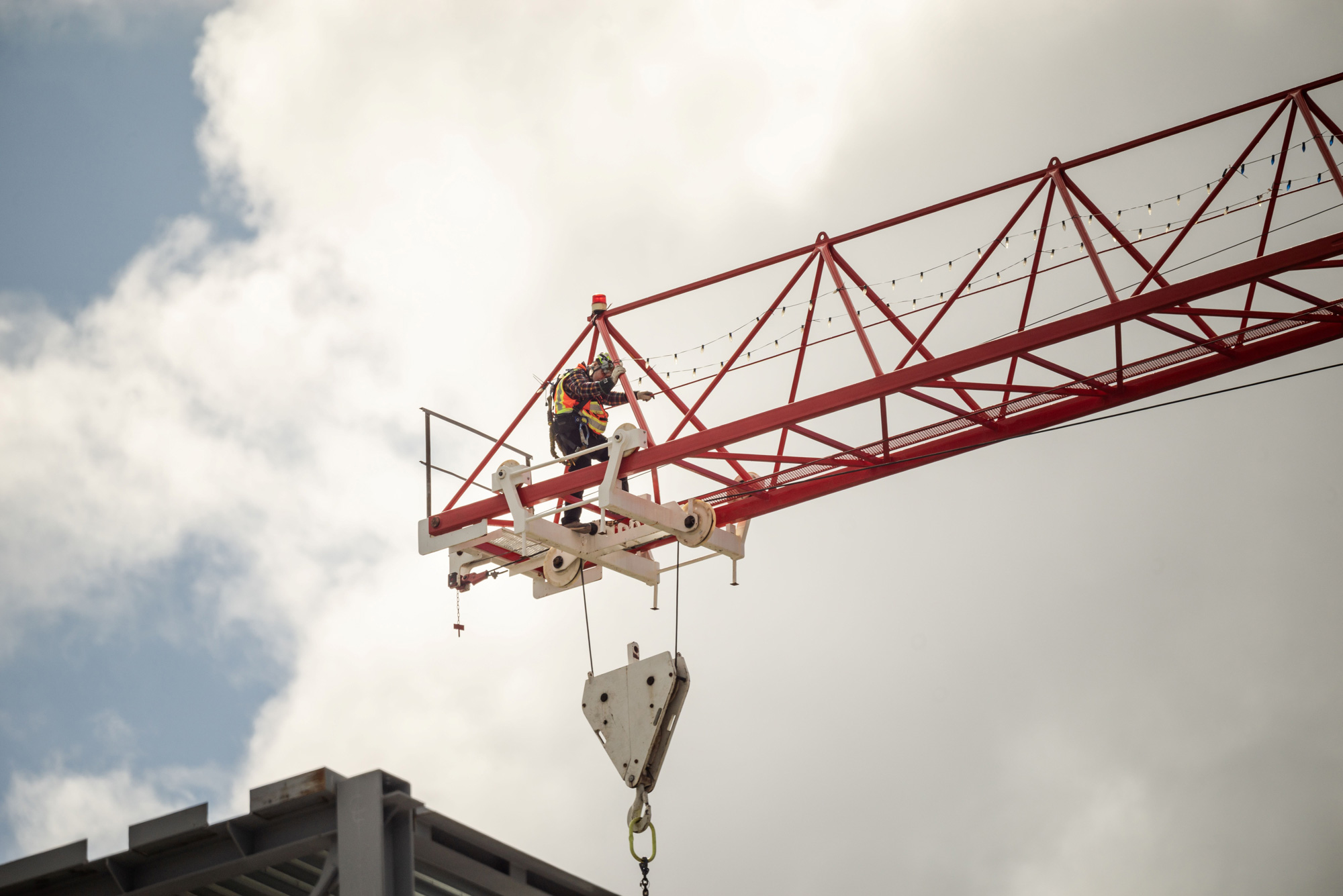September 25, 2023
Tower Crane Maintenance and Third-Party Inspections
BC Crane Safety (BCACS) met up with independent tower crane inspector, Greg Teslia, President of Crane Safety & Inspections Inc. and Mike De Jong, Manager of HS&E Ledcor in August. They, along with two WorkSafeBC officers and two representatives from the crane owner, one a technician, had just climbed down from inspecting a tower crane located at the Burnaby BCIT campus – the site of a 12-storey, 470-unit mass-timber student housing project.
Ledcor welcomed us to join their post-inspection debrief. We discussed the work they do and the value of third-party inspections to a general contractor like Ledcor Construction Ltd. which has a longstanding reputation for safety and a history of industry leadership.
Ledcor first met Greg Teslia in 2014 when he was invited to inspect the tower cranes located at the BC Children’s and Women’s Hospital by their joint venture partner. His credentials and familiarity with crane operations combined with his knowledge and experience of maintenance, erection and removal has made crane operators and maintenance technicians comfortable discussing operations, service and repair requirements. His style of friendly, frank, nonjudgmental conversation makes Greg easy to understand and get along with.
As Greg says, “Respect each other and everything will work out well.”
Prime contractors are responsible for protecting worker safety on their projects. That includes conducting regular and ongoing inspections of the workplace and subtrade work areas. Mike de Jong commented that “Greg is a great resource. Our challenge is that the cranes don’t belong to us and we don’t have the expertise.” He went on to say that a third-party inspector serves the best interests of everyone involved – the more eyes the better. Ledcor sees third-party tower crane inspections as an important component of their Worksite Inspection Program.
Greg’s task is to assess the condition of the crane, from the crane pad to the tip of the jib, from the paperwork to the operator’s cab, he wants to verify that the crane has been erected, maintained and operated according to manufacturer specifications, regulatory requirements and CSA and industry standards. He looks at the structural, mechanical, and electrical components. He calls it a “dissection” in the sense that no detail escapes his attention.
Age and wear require crane owners to be on top of maintenance and repairs to prevent breakdowns or incidents. Greg’s reports help crane owners validate the effectiveness of their inspection and service programs. His list of inspection criteria has more than 160 line items, and he doesn’t sugarcoat what he sees. He liberally shares his knowledge of service solutions that he sees from other crane owner/operators from across North America. The importance of having the crane owner’s service technician on site, as was the case the day we met with Greg, expedites the resolution of any outstanding concerns.
Third-party inspections are not new. WorkSafeBC has been conducting third-party inspections since the mid 1980s. WorkSafeBC managers and engineers, Manny Gomes, Herb Godfrey and Kathleen Sheppard pioneered the process and laid the groundwork for the tower crane inspections now conducted by the WorkSafeBC Crane and Mobile Equipment Initiative Team. The WorkSafeBC regulations, practices and dedication to protecting workers and the public from crane incidents exemplify their risk-based approach to safety.
Ledcor always invites WorkSafeBC to join Greg on his inspections. Crane owners, prime contractors, crane erectors, engineers, Canadian Standards Association (CSA), WorkSafeBC, BC Crane Safety (BCACS) and BCCA all contribute to the safety of tower cranes. Occasions like this inspection are perfect for sharing knowledge, discussing challenges, translating standards and regulations into practice, developing shared understanding and recognizing that everyone is on the same team. All have the same goal. Greg noted that WorkSafeBC is one of only a few OHS Regulators in North America with a team dedicated to crane safety.
Some of the best discussions Greg has happen at the top of the crane are with crane operators. He loves to spend time sharing his mechanical knowledge with them. Not everyone who operates a vehicle understands how it works. The same could be said for workers that drive forklifts or even operate tower cranes. The different makes, models and assemblies of cranes means that there are important mechanical differences between them. Knowing how the brakes work or gear box shifts on a particular crane can go a long way to reducing unnecessary component wear, targeting certain maintenance items, and increasing productivity. Greg’s feedback about the operator he met on this inspection was, “That guy is a professional. He really knows what he’s doing!”
Safety is a journey. Aging equipment, lack of manufacturer support (especially for older cranes), high work volumes, weather, retirements and the resulting loss of knowledge, new workers, training, new equipment, costs, schedules, etc. are not just challenges to the crane industry they are challenges across many industry sectors. Meeting these challenges and managing change effectively is critical to success and safety.
The group of people who met in August to inspect the tower crane at BCIT is an example of the type of collaboration needed across industries. There were a couple items outstanding from this inspection, but it was obvious that the right team had been assembled to help keep the construction industry focused on crane safety and keep workers and the public safe.
Regulatory Requirements and Standards in BC
WorkSafeBC OHSR 14.13 (1) states “Each crane and hoist must be inspected and maintained at a frequency and to the extent required to ensure that every component is capable of carrying out its original design function with an adequate margin of safety.”
CSA Z248-04 and ASME B30.3-2016 give detailed information for daily, monthly, and annual inspections. These standards also recommend special inspections for the tower crane’s major components. However, neither definitively lists all components since there is so much variation between manufacturers and crane types (e.g., hammerhead, luffing, flat top, etc.)
The codes recommend major component inspections be completed in accordance with the frequency intervals specified by the manufacturer or, as recommended by ASME, every five years.
BC Crane Safety suggests that crane owners follow the guidance from the standards and manufacturer’s manual to inspect the following three classes of major components at the frequencies recommended:
- Structural Components
- Slew Ring
- Slew ring fasteners
- Load Hook Assembly, etc.
- Mechanical Systems
- Hydraulic systems (motors, hoses, valve blocks, cylinders)
- Electric motors
- Braking systems
- Gear boxes
- Drums
- Bearings
- Electrical Systems and Components
- Electrical panels
- Controls and remotes
- Wiring
- Load Limiting devices / limit switches
- Zoning / Anti-collision devices
- Operators Aids (anemometer, load/radius indicator, etc.)





